
Star Trek: The Next Generation – A Final Unity is an adventure game by Spectrum HoloByte, based on the Star Trek universe. It was released in 1995 for the DOS and later ported to Mac. It puts the player in control of Captain Picard and his crew of the Enterprise D and features traditional point-and-click adventure gameplay as well as free-form space exploration, diplomatic encounters and tactical ship-to-ship combat.

A character sheet is a record of a player character in a role-playing game, including whatever details, notes, game statistics, and background information a player would need during a play session. Character sheets can be found in use in both traditional and action role-playing games. Almost all role-playing games make use of character sheets in some fashion; even "rules-light" systems and freeform role-playing games record character details in some manner.

The Mystery of Time and Space is a popular online graphic adventure game created by Jan Albartus (LOGAN). The game was produced using Macromedia Flash and was an early influential example of the escape the room genre. There are 20 levels of varying length, some consisting of a single room and others consisting of a large network of rooms. Though advertised as a constant work-in-progress with "new levels coming soon," MOTAS has not been updated since May 2008.

Uninvited is a horror-themed point-and-click adventure game developed originally for the Macintosh by ICOM Simulations released in 1986 by Mindscape.
The Eggerland (エッガーランド) series consists of several puzzle games developed by HAL Laboratory. Its first release was in 1985 for MSX computer systems. Many titles were made in the series and the gameplay is almost exactly the same in every game as well. Only a few changes were made over the years.
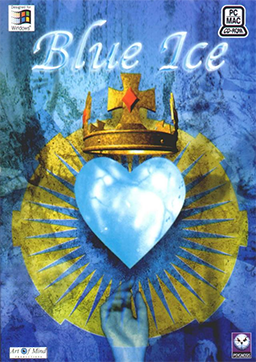
Blue Ice is a point-and-click adventure game developed and published by Psygnosis. It was released in 1996 for Microsoft Windows, MS-DOS, and Macintosh, The player navigates a sequence of screens representing the rooms in a large house. The player completes puzzles by collecting and using items. Puzzles include brewing tea, dissolving gold in vitriol, finding keys, and making blue paint.
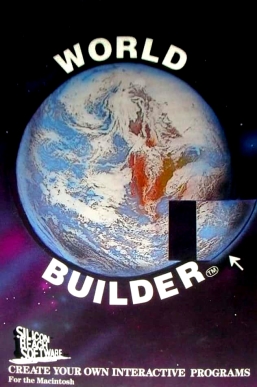
World Builder is a game creation system for point-and-click adventure games. It was released in 1986 by Silicon Beach Software and had already been used for creating Enchanted Scepters in 1984. On August 7, 1995, developer William C. Appleton released World Builder as freeware.

Crypt of Medea is an adventure video game written by Arthur Britto and Allan Lamb. It was published for the Apple II by Sir-Tech in 1984. Crypt of Medea makes use of graphics, but the game is still controlled through the use of text commands in the traditional style of interactive fiction games.
Escape the room, also known as room escape or escape game, is a subgenre of point-and-click adventure game which requires a player to escape from imprisonment by exploiting their surroundings. The room usually consists of a locked door, objects to manipulate, and hidden clues or secret compartments. The player must use the objects to interact with other items in the room to reveal a way to escape. Escape the room games were born out of freeware browser games created in Adobe Flash, but have since become most popular as mobile games for iOS and Android. Some examples include Crimson Room, Viridian Room, MOTAS, and Droom. The popularity of these online games has led to the development of real-life escape rooms all around the world.
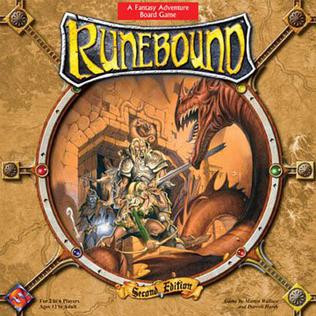
Runebound is a high fantasy adventure board game created by Martin Wallace and Darrel Hardy and published by Fantasy Flight Games in 2004. A second edition was published in 2005. A third edition was released in 2015. In Runebound, one to six players take the roles of adventurers who seek out quests. The quests are then resolved with either victory for the player, or a loss of some item. Each player is seeking quests and trying to gain experience which results in greater power and combat skill.

Rugrats: Totally Angelica is an action video game based on the 1991 Nickelodeon animated children's television series Rugrats. It was developed by Art Co., Ltd and published by THQ for the Game Boy Color (GBC) and PlayStation. The GBC version was released in 2000, while the PlayStation version was published in 2001. It is also the last Rugrats game to be released for the PlayStation and Game Boy Color. A direct sequel for the PC was released in 2002, titled Totally Angelica: Boredom Busters!. It was a point and click adventure game, and was developed by KnowWonder and published by Mattel Interactive.

Star Trek: The Rebel Universe is an action-adventure computer game published by Firebird Software in Europe and Simon & Schuster Interactive in America. It was originally released for the Atari ST in 1987, and was followed the next year with versions for the Commodore 64 and DOS.

Tinker Bell and the Lost Treasure is a 2009 American computer-animated adventure film directed by Klay Hall and the second installment in the Disney Fairies franchise. Produced by DisneyToon Studios, it was animated by Prana Studios, and revolves around Tinker Bell, a fairy character created by J. M. Barrie in his 1904 play Peter Pan, or The Boy Who Wouldn't Grow Up, and featured in subsequent adaptations, especially in Disney's animated works. It was released on Blu-ray and DVD by Walt Disney Studios Home Entertainment on October 27, 2009.

Artix Entertainment, LLC is an independent video game developer and publisher founded by Adam Bohn in October 2002. It is best known for creating browser-based role-playing video games—including AdventureQuest, DragonFable, MechQuest, and AdventureQuest Worlds—using Adobe Flash. The company released its first title for iOS and Android devices in March 2011 and is currently developing its first 3D game, AdventureQuest 3D, with the Unity game engine.
An adventure game is a video game genre in which the player assumes the role of a protagonist in an interactive story driven by exploration and/or puzzle-solving. The genre's focus on story allows it to draw heavily from other narrative-based media, literature and film, encompassing a wide variety of literary genres. Many adventure games are designed for a single player, since this emphasis on story and character makes multiplayer design difficult. Colossal Cave Adventure is identified as the first such adventure game, first released in 1976, while other notable adventure game series include Zork, King's Quest, Monkey Island, and Myst.

Dracula 4: The Shadow of the Dragon is a 2013 point-and-click adventure video game developed by Koalabs Studio for Microsoft Windows, OS X, iOS, and Android. It was published on all systems by Anuman under their Microïds brand. In 2013 the game was released on GOG.com, and in 2014 was bundled with its sequel, Dracula 5: The Blood Legacy. Later in 2014, the bundle was released on Steam.
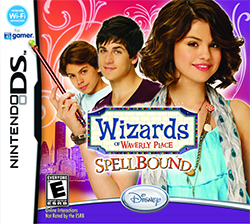
Wizards of Waverly Place: Spellbound is a video game published by Disney Interactive Studios for the Nintendo DS, and released on November 16, 2010. The game is based on the popular Disney Channel show, Wizards of Waverly Place. It is a follow-up to the first game of the same title, developed by Black Lantern Studios, which was released on August 25, 2009 in America, on August 28, 2009 in Europe, and on September 21, 2009 in Australia.
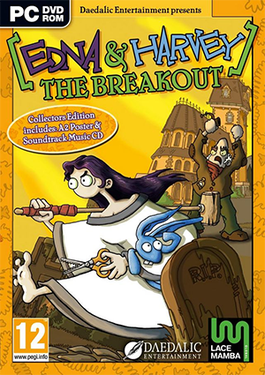
Edna & Harvey: The Breakout is a 2008 adventure game for Windows starring a young woman and her toy rabbit. The objective of the game is to escape from a mental hospital which they find themselves in at the beginning of the game.

Radical Castle is a point-and-click adventure game released for Macintosh in 1986 and distributed as shareware.

Stash: No Loot Left Behind is a role-playing video game, initially released on Kickstarter. It was officially funded on September 16, 2014, and released for Microsoft Windows in 2017. Stash was initially met with mixed reviews and has since been abandoned by its developer FrogDice.


















